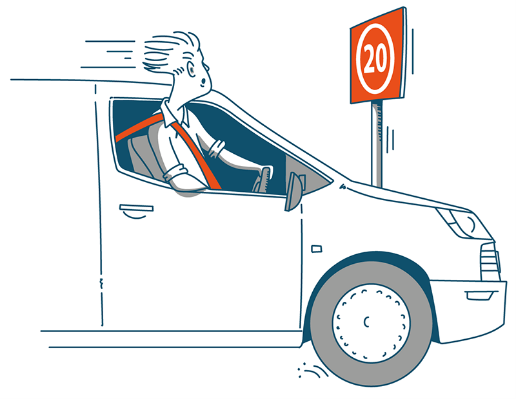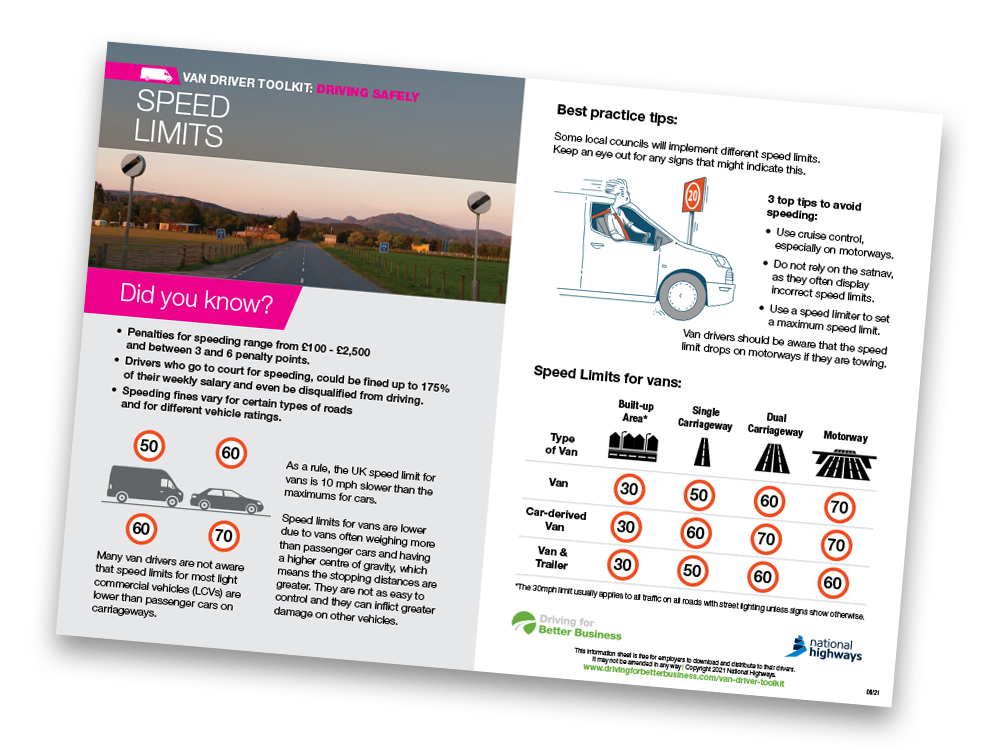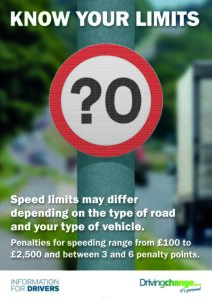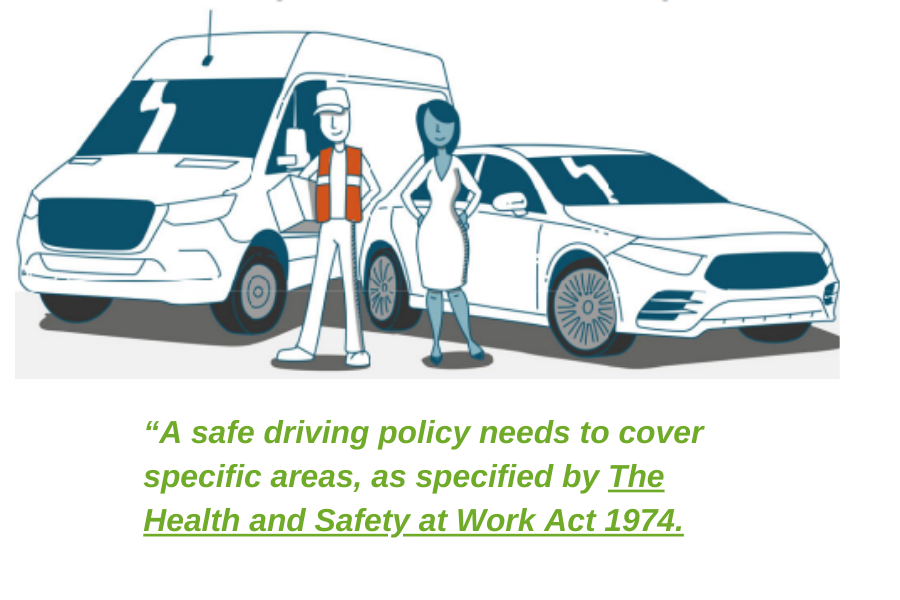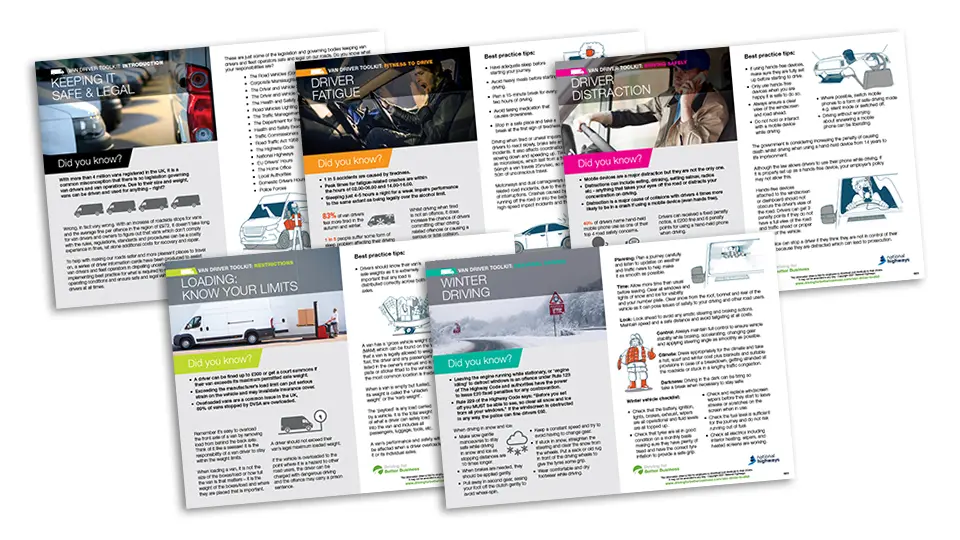Speed
January 2025
Driver Managers – improve your understanding
Our monthly fleet focus delves deeper into some of the key road safety topics to improve your understanding, with free resources for you to share with your drivers.
Each month’s topic sits in a library so, as the library grows each month, you can access a bank of resources at any time to help you improve driver safety in your organisation.
Let’s Talk About Speed
When we talk about speed, the conversation often shifts to stopping distances. People tend to boast about their vehicle’s big brakes or their Formula One driver reflexes. But let’s take a step back and think about the laws of physics for a moment.
Imagine you’re up in a helicopter, looking down at a stretch of motorway. You see two vehicles: one vehicle in lane one travelling at 70 miles per hour, and another in lane two travelling at 100 miles per hour (mph).
Suddenly, a massive hole appears in front of them; doesn’t matter how far ahead it is – everything in this scenario is the same, other than the initial vehicle speeds. Both drivers hit the brakes at the same time. The vehicle going at 70 mph manages to stop just before the edge, but the one travelling at 100 mph plummets over into the hole.
Here’s the question: how fast was the second vehicle going when it went over the edge?
Most people don’t get anywhere near this, but the answer is just under 72 mph. Despite an initial speed difference of 30 mph, the faster vehicle was still doing over 70 mph when it went over the edge. This happens because you don’t lose speed in a straight line; you lose it exponentially based on the initial energy.
Let’s try another example that’s perhaps more relatable. Imagine the faster vehicle is doing 80 mph instead of 100 mph.
The slower vehicle stops, but the vehicle travelling at 80 mph is still doing almost 40 mph when it reaches the edge. Now, replace that hole with something solid.
The impact at that speed could be devastating.
Now, let’s consider two HGVs. One is doing 50 mph and the other is running on the limiter at 56 mph. Both hit the brakes at the same time. The 50 mph truck stops, but the 56 mph truck goes over the edge at 28 mph. What if that hole is replaced with stationary traffic – in that scenario, your driver has probably badly hurt the people in the vehicle he hits. And remember, these are best-case scenarios. If your reactions are slow, or your vehicle isn’t well-maintained, the outcome could be much worse.
Finally, let’s bring this into an urban setting with a speed limit of 30 mph. A vehicle going at 30 mph stops just before hitting a child who stepped into the road. However, a vehicle moving at 35 mph is still doing 18 mph at the point of impact with the child.
Around 18 mph is where the likelihood of killing someone you hit is more likely than not.
So please think carefully about your choices and those of your drivers – reducing your speed by a few miles per hour won’t significantly affect your arrival times, but it could save a life!
Your Legal Update: Speed
What are an employer’s responsibilities when it comes to ensuring your drivers are driving at appropriate speeds for the road conditions?
What should safety managers and fleet managers be doing to support the safety of their drivers and other road users?
- Does your driver handbook & driving for work policy specify that drivers should not exceed speed limits?
- Do you ensure you are not issuing routes and jobs where your drivers are likely to be placed under significant time pressure?
- Do you ensure that there are no incentives in place to cause your drivers to exceed the speed limit?
- Do your drivers understand there are different speed limits for the different vehicles they may have to drive?
Read the full legal update on speed and your responsibilities here.
Driver Resources – Speed
What’s in the Resource Download
Download a zip file with additional resources to share with your drivers including:
- An article to share with your drivers on speed limits
- Short safety messages on speed to send to your drivers on their devices
- A poster for your staff noticeboards
- Information sheets from our Van Driver Toolkit



